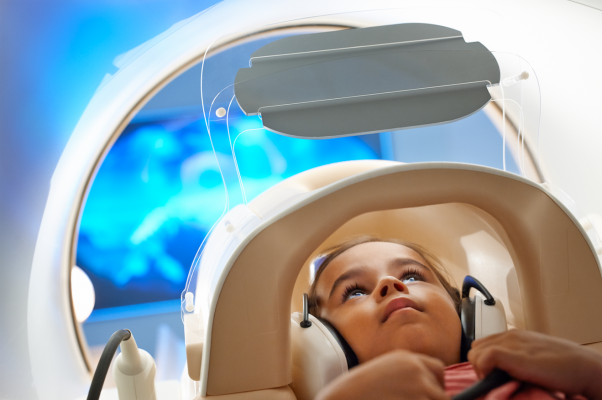
March 8, 2018 – Children often find it difficult to remain still for magnetic resonance imaging (MRI) examinations, but an alternative method to conventional MRI for pediatric patients has shown promise in reducing motion-related artifacts in brain imaging, according to an article published online ahead of print from the April 2018 issue of the American Journal of Roentgenology (AJR).
The authors, led by Ji Eun Park of the Seoul National University Children's Hospital and Kyung Hee University Hospital in Seoul, South Korea, said radially sampled 3-D fat-suppressed T1-weighted gradient-echo sequences (radial volumetric interpolated breathhold examination, or radial VIBE) for contrast-enhanced brain MRI of children was shown to be a viable alternative to conventional cartesian acquisition for contrast-enhanced brain imaging of restless children.
MRI is increasingly used in the evaluation of the brains of children because, unlike CT, it entails no radiation exposure and provides superior soft-tissue contrast. Titled "Three-Dimensional Radial VIBE Sequence for Contrast-Enhanced Brain Imaging: An Alternative for Reducing Motion Artifacts in Restless Children," the study compared contrast-enhanced brain MRI examinations performed with a magnetization-prepared rapid-acquisition gradient-echo (MP-RAGE) sequence with those performed with a radial VIBE sequence.
Researchers reported that images obtained with the radial VIBE sequence had fewer motion and pulsation artifacts than those obtained with the MP-RAGE sequence. Among 25 images with serious motion artifacts, radial VIBE images had significantly higher scores for all qualitative parameters, including overall image quality, than did MP-RAGE images.
For children who could remain still, MP-RAGE yielded better image quality, the authors said, while the radial VIBE sequence yielded improved overall image quality and lesion conspicuity in imaging of restless children.
For more information: www.ajronline.org
Related Pediatric MRI Content
Pediatric MRI Calming Techniques
VIDEO: MRI Mobile Experience Apps for Kids


 December 15, 2025
December 15, 2025 









